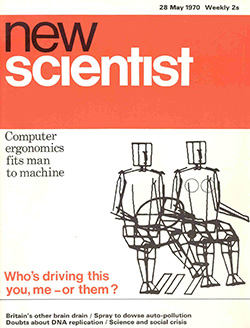Assessment Tools
SAMMIE’s standard features such as reach or vision assessments are also augmented by a range of other assessment tools to support a variety of analysis types. These range from simple measurement capability through to a spherical field of view assessment originally developed as part of the primary NCAP vehicle safety regulations.
Measurements provide the ability to obtain the linear distance between any two objects or geometry within the model.
Field of View assessments are provided in a number of tools. 2D plots can be generated (on the ground plane for example) representing the area visible to a human model when viewed through a window aperture or reflected in a mirror surface. In addition, 3D projections can be generated representing the viewable volume available to the human model, again directly through a window, or indirectly through a mirror. These assessment tools provide a highly visual means of evaluating visibility afforded driver’s and operators and allows critical blind spots to be identified. Field of view can also be projected through an aperture onto a spherical surface of known radius centred at the eye point. This 360 degree analysis was defined as part of the Primary NCAP safety regulation development and provides a viewable area measurement useful to comparative assessments of a range of vehicles.
Mirrors can be modelled to represent both flat and spherical curved mirrors. The focal length, convexity/concavity, size, position, mounting and orientation of the mirror can all be interactively adjusted to display the required field of view on the mirror surface.
Simple biomechanical evaluations are provided through the assessment of centre of gravity, and spinal loading through the calculation of force in the erector spinae, disk compression and shear at the base of the spine. These can be calculated for an unloaded human model, a human model with loads in either hand, or with an external load such as a rucksack. Though not currently provided within SAMMIE the metrics from this and other assessment tools can also be used to support standard NIOSH, OWAS, RULA etc. assessment methods.






